Optimizing Your Gardening Experience
UT Health Austin clinicians share tips for minimizing the aches and pains associated with gardening
Reviewed by: Sylvia Deily, DC, Cert MDT, and Emmy Feeler, MSN, APRN, FNP-C
Written by: Kaylee Fang
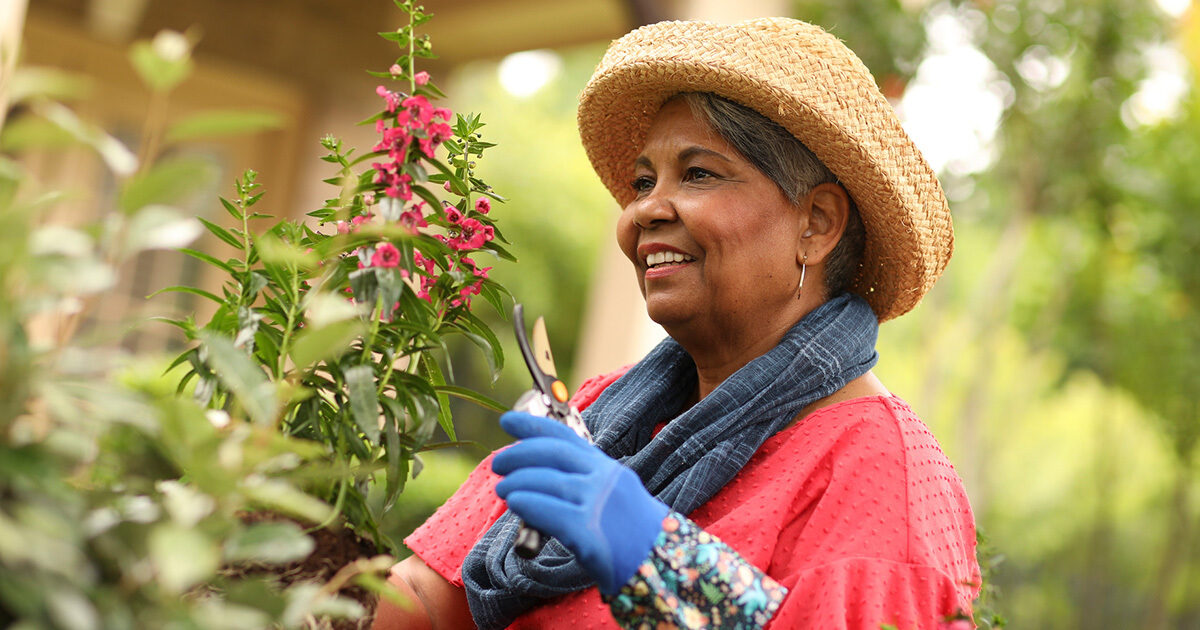
If you haven’t put on your gardening gloves since last season, you may find the hours spent tending to flowers, trimming bushes, or planting seeds can be physically demanding. Before digging into your lawn or raised bed, take a moment to prioritize your health.
Adopting strategies that promote ergonomic practices and self-care can help reduce the risk of developing aches and pains. Sylvia Deily, DC, Cert MDT, a chiropractor in UT Health Austin’s Back and Neck Pain Center within the Musculoskeletal Institute, and Emmy Feeler, MSN, APRN, FNP-C, a family nurse practitioner in UT Health Austin’s Walk-In Clinic, share proactive measures that can be taken to help minimize strain and support personal well-being, so you can cultivate your garden with ease.
Plan Ahead
A little bit of planning can go a long way in preventing aches and pains that may arise from working in your garden for extended periods of time. By taking the time to strategize and prepare before getting your hands dirty, you can minimize the risk of discomfort and ensure a more enjoyable gardening experience.
Tool Placement
Placing your tools in a strategic and organized manner ensures easy access when you need them, saving time and effort and allowing you to focus on the task at hand. When tools are within reach and arranged logically, it also helps improve efficiency by reducing unnecessary movement, such as searching for or walking back and forth to grab what you need.
“Gather all the tools you need ahead of time and place them in a convenient area nearby,” recommends Deily. “Lay tools at a reachable distance from the waist or hip level height, and don’t place them on the ground. Consider how high or low you may need to reach and maintain a comfortable shoulder-to-knee level during activities to minimize aches and pains.”
Explore gardening tools and equipment that can help reduce strain and minimize the risk of injury.
<br>Seasonal Allergies
As the seasons change and plants release pollen into the air, working in your garden can expose you to various allergens, triggering sneezing, itching, congestion, and other discomforts.
“Oaks, molds, and pollen are the most frequently encountered allergens,” shares Feeler. “The pollen released into the air by trees, grass, weeds, and flowers can cause you to feel worse after a day spent tending to your garden.”
Stay ahead of seasonal allergies by:
- Monitoring pollen counts and allergy forecasts
- Planning gardening tasks around rain showers that temporarily clear pollen and other allergens in the air
- Taking allergy medicine before you start gardening rather than after symptoms begin
- Wearing a mask to keep from breathing in too many allergens
- Avoiding touching your face and eyes while working outdoors
- Splashing water on your face and in your eyes to remove lingering allergens
- Changing your clothes and showering before bed
- Staying indoors on windy days to avoid increased allergen exposure
Learn more about seasonal allergies and download our seasonal allergy guide.
<br>Weather Conditions
As temperatures begin to climb, it’s important to monitor high heat and humid conditions and avoid working during the hottest part of the day. “Many believe the heat is at its peak at noon, but it’s actually occurs between 3 p.m. and 5 p.m.,” notes Feeler. “The best time to plan activities in your garden is early morning or late evening.”
The sun emits ultraviolet (UV) radiation, and overexposure to the sun can be harmful to your skin, resulting in sunburn, accelerated aging, and the risk of developing of skin cancer. “Taking preventive measures is the best defense against the sun,” shares Feeler. “Apply sunscreen with an SPF of 30 or higher 15 minutes before heading outside, even on cloudy days, and be sure to re-apply sunscreen every two hours or immediately after sweating. You can also shield your skin with light, breathable clothing.”
Outdoor physical activity during high temperatures can cause significant fluid loss. “If you spend a long time in the heat or perspire heavily, be sure to replenish any lost fluids,” advises Feeler. “Water and electrolyte-rich beverages are efficient options to help you stay hydrated. Make sure to keep your drinks nearby to serve as a reminder to hydrate as well as make it easier to take a sip and carry on with your outdoor tasks.”
Learn more about outdoor sun safety.
<br>Focus on Movement
Gardening is a form of exercise that involves a range of motion, including standing, leaning, twisting, lifting, pushing, and pulling. Poor mechanics or movement patterns and awkward positions can increase the chance of soreness and pain.
“If you’re not used to repeated bending and lifting, back muscles can get tired, sore, and even can go into spasm,” explains Deily. “Remember to stretch after you work in the garden, as it can ward off stiffness and soreness, and be careful to apply proper bending and lifting techniques with your hips and back.”
“Dynamics and posture that you would use at the gym would be similar ergonomics to use in the garden,” continues Deily. “Lean with proper ‘hip hinging’ or the Romanian deadlift technique, where the body is bent at the hips and the back is flat. Lift with proper squat technique with your feet shoulder-width apart or wider, hips back behind you, and knees over ankles while keeping your lower back neutral.”
Stretching exercises that can help minimize aches and pains and speed up recovery:
Figure 4 Stretch
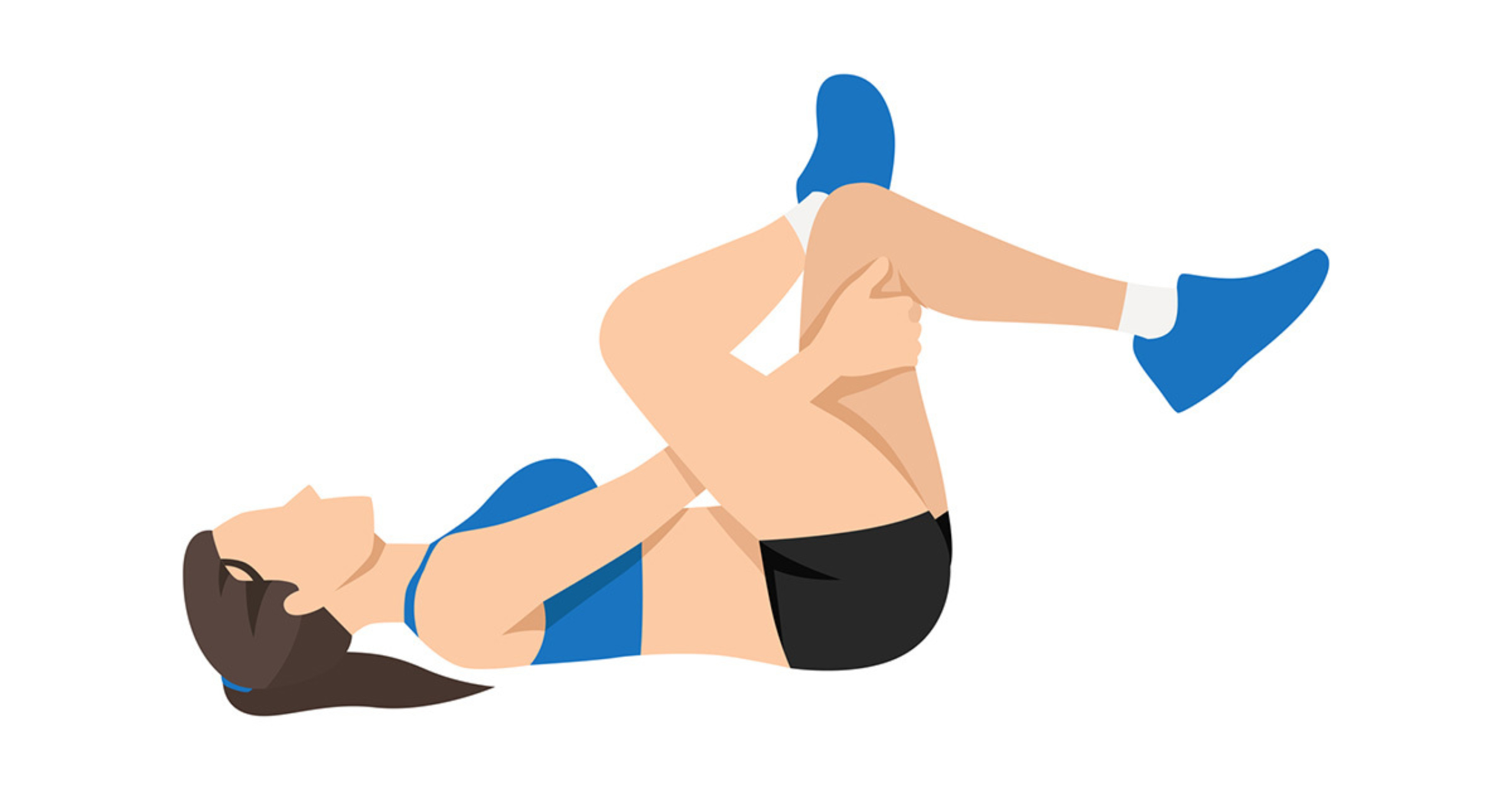
- Lie on your back with your feet flat on the floor. Then, cross your right ankle over your left knee.
- Bring your left knee toward your chest. Reach your right hand through your legs and interlace your fingers just below the crease of your left knee.
- Pull your left knee toward your chest by using your arms. Hold this stretch for a minimum of 30-45 seconds or up to 2 minutes. You should feel the stretch in your right glute and hip.
- Gently release and repeat on the opposite side.
Spinal Twist
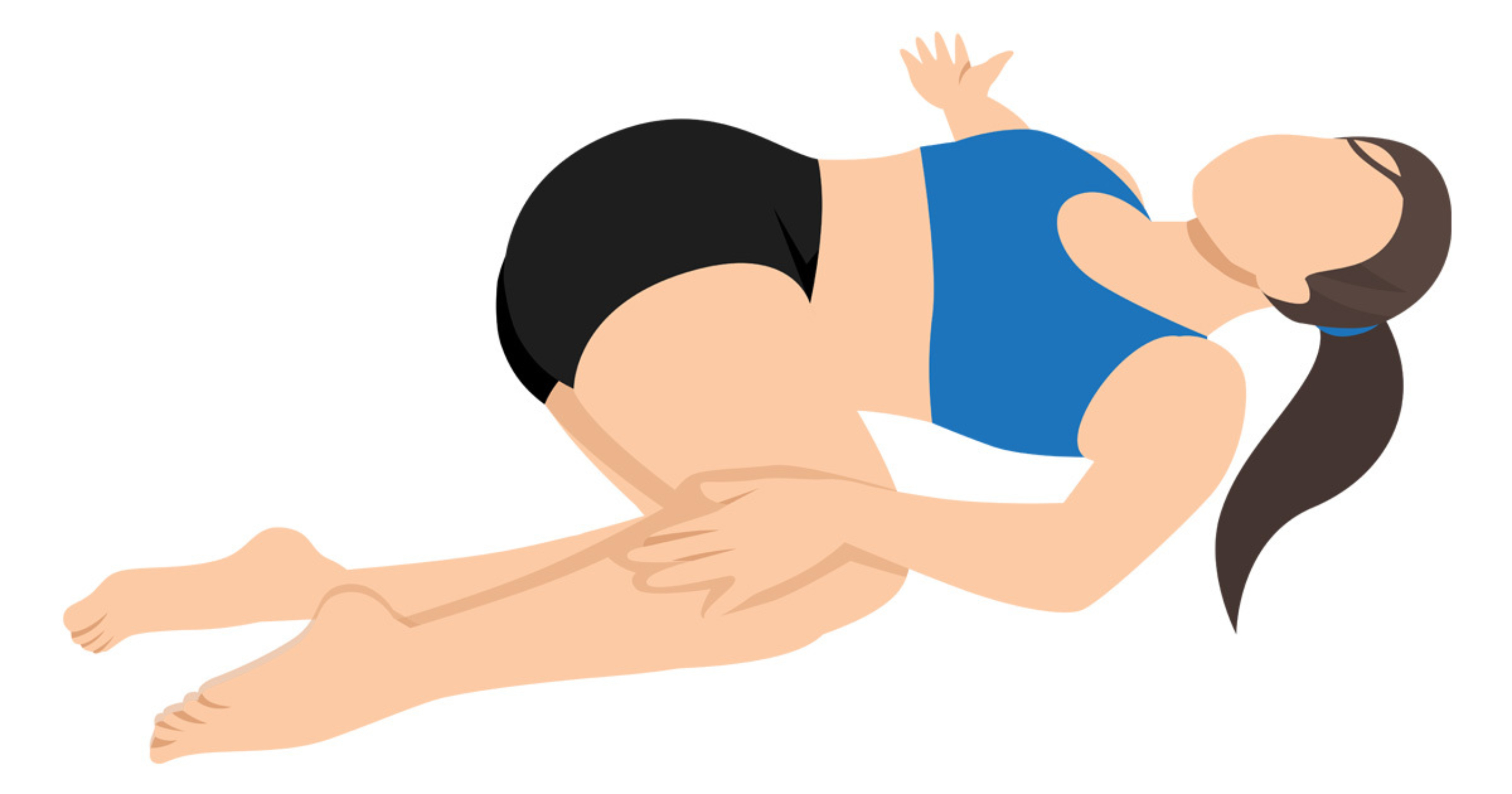
- Lie on your back, pull your knees to your chest, and slowly lower your knees to one side. You may use your arms to guide this motion.
- With the opposite arm and shoulder reaching towards the floor, allow your stacked knees to relax on the floor.
- Relax into the stretch for 30-45 seconds or up to 1-2 minutes. You should feel the stretch broadly through the buttocks and lower back.
- Pull your knees to your chest after the stretch. Gently release and repeat on the opposite side.
Hamstring Stretch
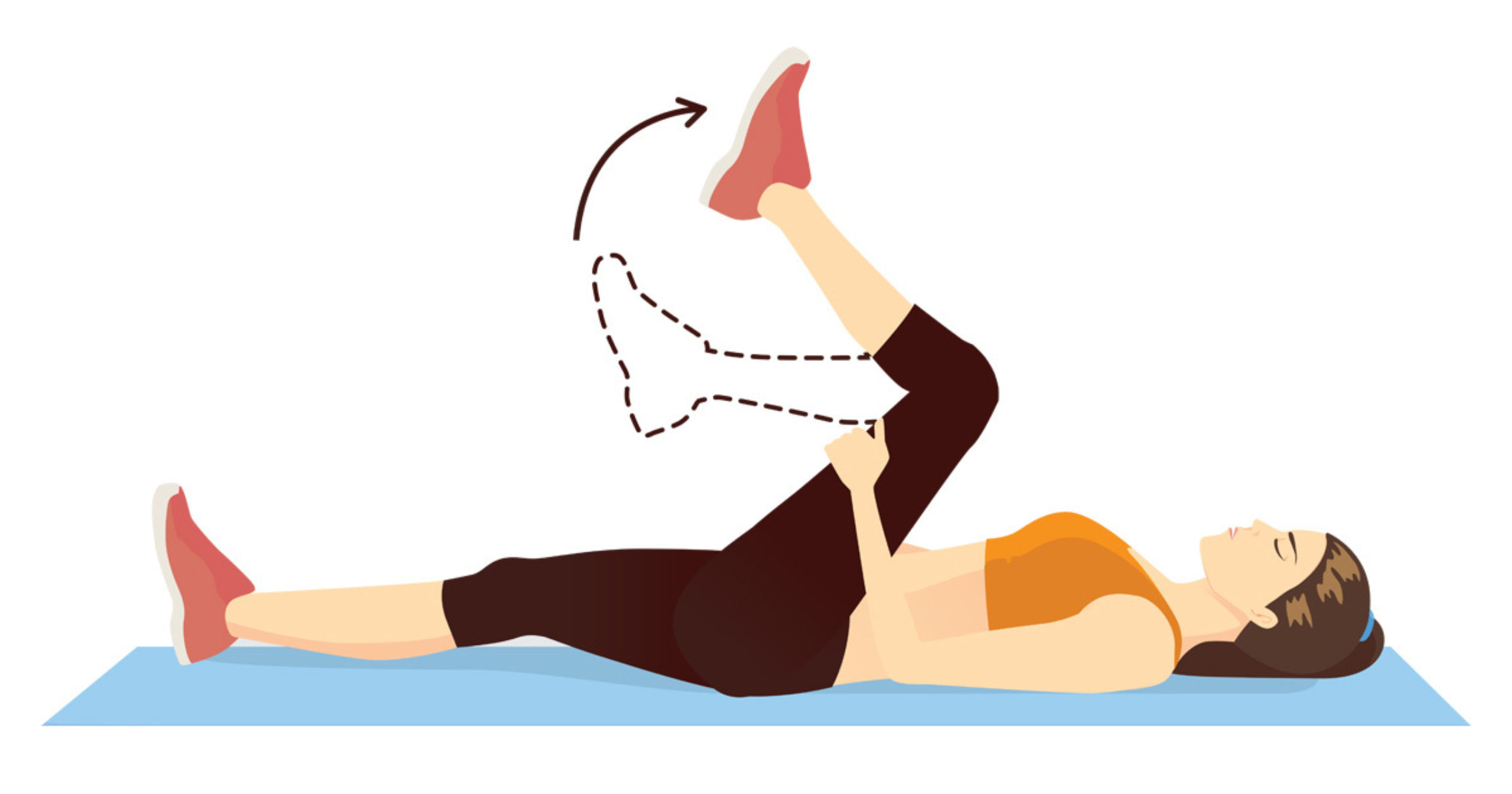
- Lie on your back and pull one knee to your chest by grabbing the back of the thigh
- Slowly straighten your leg until you feel a stretch in the back of your thigh – it is fine that the knee doesn’t completely straighten.
- Hold for 2-10 seconds, repeat 5-10 times, and then switch legs.
Kneeling Lunge
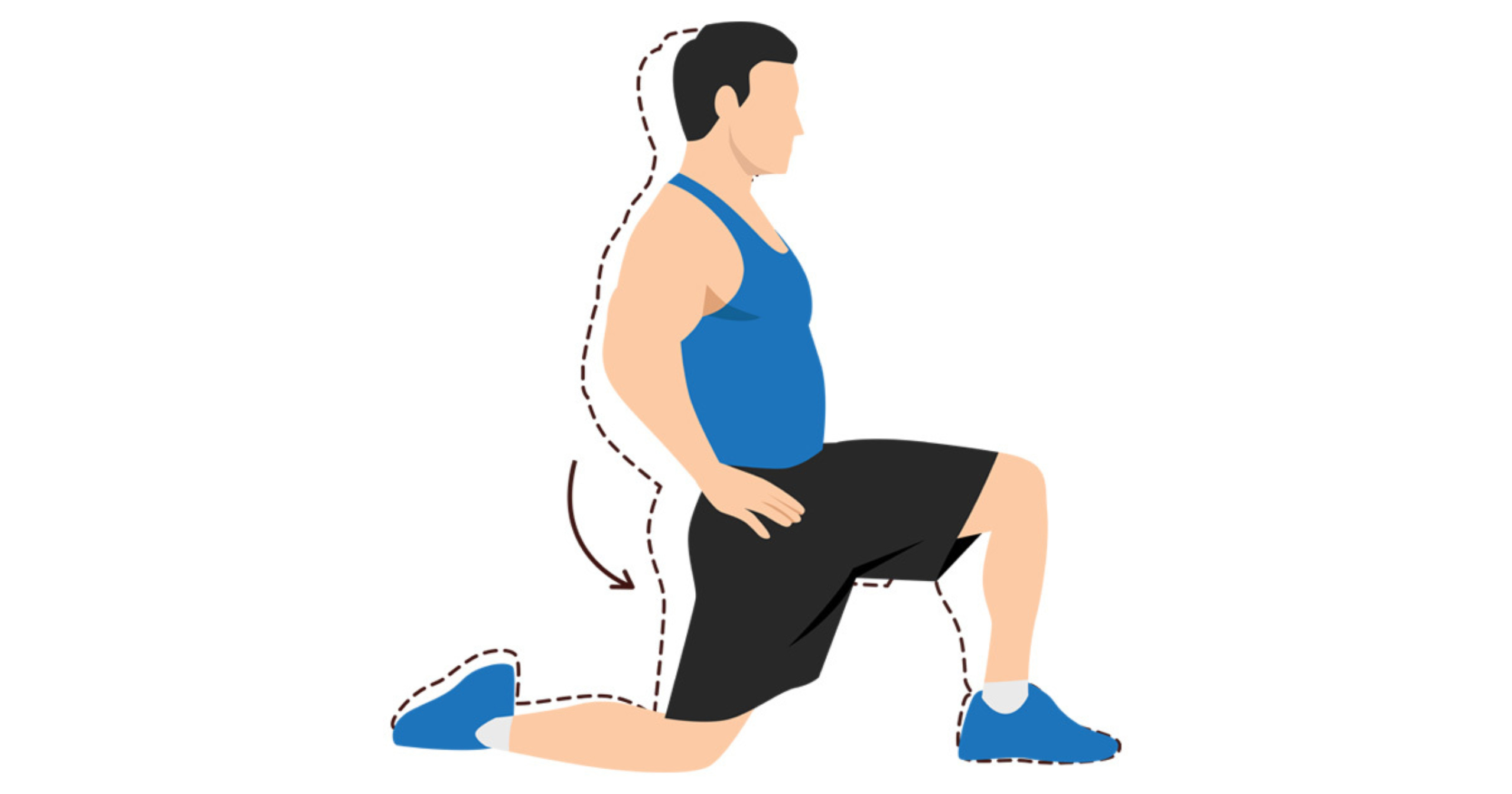
- In a kneeling position with your right knee in front, keep the hips square and bend the right knee.
- Shift your weight forward, bearing more weight on your right leg. You should feel the stretch through the front of the kneeling thigh and hip.
- Hold for up to 30 seconds and repeat on the other side.
Pace Yourself
Although it may be tempting to tackle a gardening project in as little time as possible, listen to your body, as it will let you know if you’re overworking yourself. “Spread out your gardening projects over time by breaking down gardening activities into smaller tasks that cover one area one day and another area the next,” advises Deily. “If you start to feel a bit tired from one task, switch to another type of task and movement to target other parts of your body.”
After laying down mulch for 15 minutes, where you’re bending and lifting, you may want to switch to trimming the bushes, where you’re moving and standing at a higher level, to reduce the strain on your back and hips. “If you begin experiencing increasing pain,” continues Deily, “this indicates that you should consider modifying your activity or movement or stop for the day.”